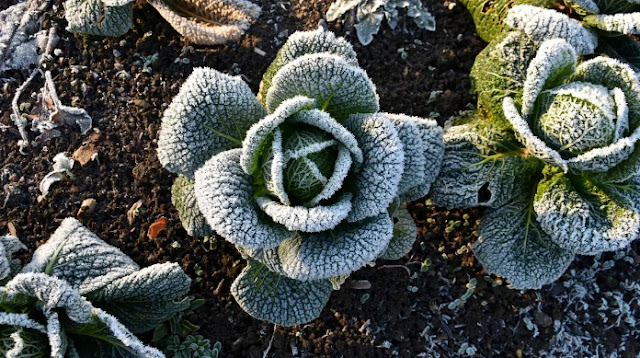What is a Frost Date? Why are They Important to Gardeners?
What is a Frost Date? Why are They Important to Gardeners?

Have you read the seed packet instructions and wondered what it means to plant before the date of the last frost?
Before starting the garden this year, it is important to know what the frost dates are and why they are important. That way you will get the best results. It is important to track the weather forecast as a gardener, as frost does nothing to your delicate plants.
Fortunately, there are many resources that can help protect your crops from this enemy.
What is a Frost Date?
If you start your garden from seeds, the packet will be packed with information such as plant descriptions, best-by dates, and planting instructions. Planting instructions usually also include when to plant seeds based on the date of the first and last frost. These dates play an important role in the success of your plant, so it is important to plant according to these instructions.
Frost dates are estimated dates for weather conditions that can cause frost on the ground. Frost dates are important for gardeners. Knowing when the frost is there can minimize the risk of cold weather damaging or killing the plants. The date of the last frost indicates the safest time to plant the seeds, and the date of the first frost indicates the estimated time when the plant needs to be harvested.
Keep in mind that these data are only estimates based on historical climate data. Therefore, there is always the possibility of frost around the specified date.
How to Use Frost Date for Gardening
The date of your frost is determined by the area you live in. You can use this search tool on the Old Farmers' Almanac website to find out the estimated dates for each year. Enter your zip code or city and state to see all of the following information:- height
- Last spring frost date
- Early autumn frost day
- Length of growth period
From delicate herbs like basil and dill to hearty vegetables like radishes and potatoes, you'll get the perfect date to take advantage of the best growing conditions. For a more detailed guide to growing vegetables in your area, including essential reference charts for growing seasons, we recommend the Old Farmers' Almanac Vegetable Gardeners Handbook.
Learn how to plant seeds and store them for next year and get helpful step-by-step instructions on how to grow a green thumb.
Why it is important to monitor the weather
It is useful to know the dates of the first and last frosts in your area, but it is also important for the gardener to pay attention to the clues to the weather, as these dates are estimated. This is especially true as unpredictability appears to be higher than ever in some areas.Since the ground is colder than air, frost dates are predicted based on temperatures reaching 32 degrees Fahrenheit. That is, a freeze alert will be displayed when the temperature is between 3336 degrees Fahrenheit. According to Almanac, the following classifications of freezing temperatures that affect plants in various ways are also displayed.
- Light freeze: This means that the temperature will be 2932 degrees Fahrenheit, killing sensitive plants.
- Moderate frost: Temperatures of 2528 degrees Fahrenheit fall into this category and are harmful to most plants.
- Below freezing: 24 degrees Fahrenheit or less. This cold temperature causes serious damage to most plants. Just paying attention to these temperatures during the planting and harvesting season will prevent them from undoing all your hard work. How to protect your plants from frost
Unexpected early or late frosts can surprise gardeners. Therefore, if you live in an area like New England where the weather is particularly unpredictable, it is always a good idea to be prepared. The plant cover is great as it prevents the frozen air from coming into direct contact with the plant's moisture and creating frost.
Column covers like these in Agfabric create a greenhouse effect and keep the plants warm. This is also useful. They also protect your vegetation from insects, animals and strong winds. Whether you are new to gardening or have the greenest thumbs, knowing the date of the frost in your area can mean the life or death of your plant.
With this important knowledge, you can protect your precious plants and enjoy delicious harvests all year round!

Post a Comment